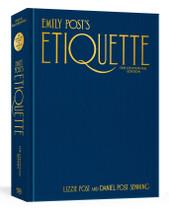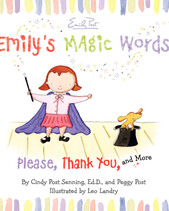
The Etiquette of Social Distancing During the COVID-19 Pandemic

We are many months into life in the age of COVID-19 and it’s getting
more complicated. Right as many of us were getting used to staying
distanced, staying home, and staying in, some states and areas are
relaxing restrictions. It isn’t life as it used to be, and it’s
inconsistent across the nation. As we all try to figure out what
relaxing measures means and what we are comfortable with, we’ve also
embraced full on what life via video chat and living six feet apart can
be like. Like normal humans, we all have questions, concerns, pet
peeves, opinions and of course mute buttons that malfunction.
Before we dive into Etiquette in the Age of COVID-19 we would like to start by saying:
The threat of the novel coronavirus is still present. Until we have a vaccine or until we’ve gotten a handle on this virus’ impact on us, we are going to see requests, and requirements to physically distance ourselves and use personal protective measures like masks and hand washing regularly. It has changed our social behavior and it will continue to change our social behavior as communities find ways to interact safely. These new social measures can feel incredibly awkward and at times impolite, but you are not alone in feeling that way about them. Everyone is learning and figuring this out as we go.
Safety is the guideline right now and measures that we take to protect ourselves and others are right in line with the Emily Post principles of etiquette: consideration, respect, and honesty.
To find more information about the virus, it’s spread and what precautions and measures to take please visit:
The Centers For Disease Control
The World Heath Organization Coronavirus Summary
As well as your state or local department of health.
Safety First
When we think about what advice to give, we think first about safety and then about how to be kind and considerate and respectful when trying to be safe. Safety comes before etiquette. This doesn’t mean we toss consideration, respect, and honesty out the window. Far from it, we’ve seen how doing so can lead to tragically bad and completely unnecessary things happening. What it means is that how we interact and what is deemed “polite” or “acceptable” behavior will change during this time. Let’s look at some of the basics to consider here and for specific topics see these articles:
Zoom Etiquette: Tips for Better Video Conferences
Weddings in the Age of COVID19
Canceling Holiday Plans During COVID-19 (coming soon)
Physical Distancing
We are all familiar with the term “social distancing” by now. And many are encouraging the use of the phrase “physical distancing” instead which helps people to imagine a less isolated solution. Our goal for physical distancing is that when out and about in public or when socializing with those we don’t live with, we keep ourselves – or our family group – at least 6 feet away from others when possible.
It’s not as easy as it sounds. We’ve all navigated a tight aisle at a store, an elevator or stairwell, or a friend leaning in too closely despite feeling awkward. But what is the right thing to do?

Speak Up
We get asked, more than anything else through our podcast and media interviews, how do you speak up when something is wrong, or bothering you? It’s not an easy thing to do. How you do it makes a huge difference to how well it’s received, but it’s not a magic key. You can never predict someone else’s reaction, especially that of a stranger. So our first piece of advice is and always will be to seek the help of someone in charge if the scenario provides such a person. A manager, usher, flight attendant, host, or whomever is in charge, can have the authority to help you and can also ensure that you aren’t dealing with someone alone. That being said, you don’t do this as a way to punish someone else, it’s to make sure a concern is raised, or that help or safety can be achieved.
If someone at a store hasn’t given you enough space to pass or reach the item you’d like, then a friendly “Mind giving me just a little more space so I can pass [or grab that item] safely?” You want to have an upbeat tone to your delivery, no edge whatsoever (think that person you know who is always upbeat, or sounds cheerful and if no one comes to mind think: how would Glinda the Good Witch, Dr. Martin Luther King, Mother Teresa, the CW’s Superman say it?). If the person scoffs at you, you can either pass anyway keeping as much distance as possible, wait until they move farther away, or go get something else and come back later.
Other phrases that are being heard and used when out and about to manage distancing:
Excuse me Sir, the line starts back there, everyone’s just distanced.
(while stepping back) Sorry I’m trying to keep 6 feet away.
Excuse me, I was next.
I’ll wait and catch the next elevator.
After you, please. (said genuinely)
Do you mind giving us just a little bit more space please, (hopefully followed by a: thank you so much)
A little space please.
Flow of Traffic
While following the guidance of the arrows and directions through stores is always important, it’s not worth getting into an altercation over. Either pass, doing what you can keep your distance, or go back the other way if the aisle isn’t crowded. Don’t make a stand when there are other safe options.
Public Outdoor Spaces
When it comes to public outdoor spaces it’s important to respect any distancing guides that have been put in place whether it’s marked areas to lounge or workout in, or directions for flow of traffic. Remember that even though you’re spaced apart from others, covering your mouth when you cough or sneeze as well as not coughing, sneezing, singing, or yelling in the direction of others is helpful.
When trying to create physical distance on sidewalks, recreational paths and trails, you’re still trying to aim for six feet (about two adult arm lengths) apart. It’s really thoughtful if you’re a group or family out together to consider dropping to single file when passing others to help make room.
If it’s easy for you to be the person to step off the path or into the street (because you aren’t, using a walking or mobility aid, managing a frisky dog, balancing a toddler and a baby carriage or are on foot rather than wheels) to create space by all means make the move and do so early so that the other person doesn’t even have to guess at it.

Greetings
Greetings continue to feel lacking during this strange time. Despite wonderfully bright and cheery waves, mini dances, hops, and skips when we meet, we miss hugs and solid handshakes, high fives, and fist bumps. Greetings that involve touching are still not recommended at this time, so perfect your waves (you know your “professional wave”, your “zoom-meeting wave”, your “I-love-you-Grandma wave”, your “I-haven’t-seen-you-and-I’m-trying-so-hard-not-to-hug-you wave”) and use your tone of voice to match the occasion.
Wearing Masks
While masks are causing a lot of divisiveness, when combined with physical distancing wearing a mask in public can greatly reduce the risk of spread. Wearing masks may be around for a while so it’s best to try and get used to what it’s like to interact with them on. Since most people are wearing cotton or medical masks and few have clear plastic ones allowing their full face to be seen we are more often than not without many facial cues.
Smiling (anyway), and using your eyes (cue acting skills from every medical show ever for inspiration) and hands to gesture will be the way to connect while wearing masks.
Masks unfortunately also muffle the sound of our voice and so it’s important to get comfortable speaking up, especially when in a noisy store or on a loud street. While you don’t want to shout to the point of sounding unnatural or making the listener uncomfortable, you do need to literally speak up to be heard. If you don’t, often the other person will lean in to hear you, and then you end up stepping back to recreate some space. It’s a odd dance but it happens often.
As we move into figuring out dining indoors and patio dining scenarios be prepared to see people storing their masks in a paper bag or envelope while eating. Some places may place plastic shields between tables or even at tables depending on the restaurant and local requirements.
Wearing masks outdoors is not a bad idea if you’re passing frequently while out on recreation paths and trails or in the park or on the sidewalks of your neighborhood. Many choose to “mask when they pass” and let their mask down while on long stretches without others or when there’s more than enough room to pass without any worry. (According to this article in the New York Times, you’re more likely to encounter an issue for yourself if you have prolonged time indoors without masks on than if you pass someone outdoors without a mask on.)
If you’re uncomfortable when you encounter someone without a mask on resist the urge to glare or tsk at them. Do what you can to keep yourself physically distanced and avoid interacting instead. Remember you can only control yourself as best you can. There will be times when it doesn’t go perfectly and even though that can cause stress and anxiety, which often lead to rudeness, arming ourselves with kindness and avoiding judgement of others is good etiquette.
Contact Tracing
Contact tracing – tracing the virus’ spread through individuals who have tested positive or been around those who tested positive for COVID-19 – is happening at different rates throughout the country, but early indications show that contact tracing by businesses and through events that we attend may become commonplace. Many places already use your phone number or email address to contact you about tickets or a reservation or even a purchase so it’s not unfamiliar. But to have it be connected to our health when visiting a restaurant can feel very different. While we don’t know yet exactly how contact tracing will impact our personal social gatherings (birthday parties, showers, weddings…) or our public socializing (bars, sports, groups, restaurants…) we are considering the possibility that in the future a host’s to-do list list, or advice for making a restaurant reservation for a work lunch might involve contact info for potential contact tracing follow ups.
Be Compassionate
We cannot emphasize this enough right now. These are extraordinary times and there are so many ways this virus is impacting all of us. Especially when it comes to how we are mentally handling the longevity of this pandemic. You don’t know what is affecting someone’s life making the current threat even worse (financially, emotionally, physically). It’s important to respect people where they are at, and not blow off their concerns or drive fear where it doesn’t need to be.
Many of us are so fortunate to have so many ways to connect to help get us through this crisis together, but loneliness and anxiety are still huge concerns. Reaching out to one another. Being patient and kind with each other. Listening to one another. Respecting one another. Helping those in need. These are the kinds of attitudes and actions that will carry us through. They often cost us nothing, and yet they can make an impactful difference.










